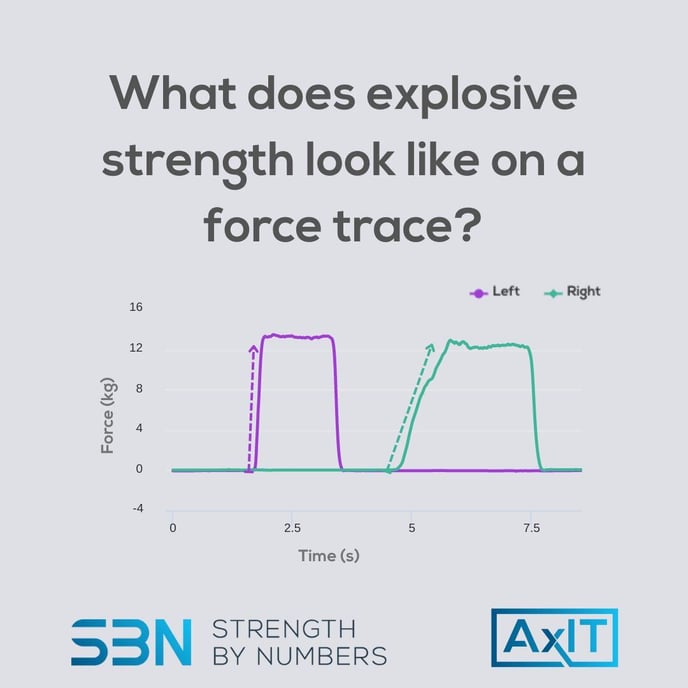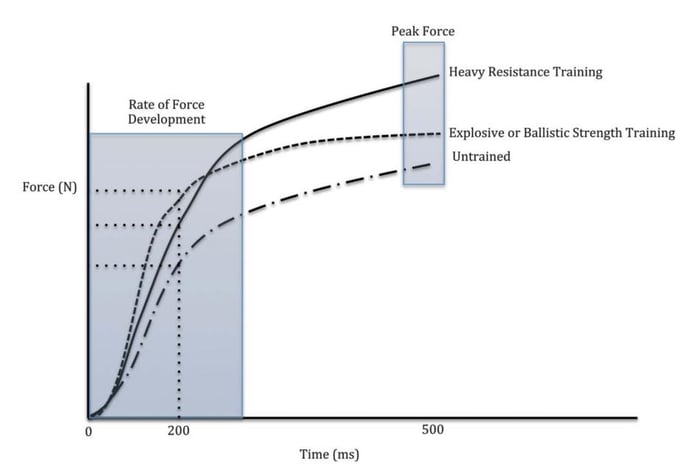What Is Rate Of Force Development (RFD)?
Understand how to interpret RFD

The Rate Of Force Development (RFD) is a measure of explosive strength, or simply how fast an athlete can develop force – hence the ‘rate’ of ‘force development’.
AxIT calculates RFD on a 100ms window displaying the force as the amount of force per second.
Isometric Testing
In isometric strength testing, the rate of force development (RFD) refers to how quickly a person can generate force in a specific movement or muscle contraction. It’s a critical measure in performance, rehabilitation, and training contexts, as it reflects the ability to produce strength rapidly.
High Rate of Force Development:
- Fast Force Generation: A high RFD indicates that an individual can quickly produce a large amount of force in a short period. This is often linked to explosive strength and power, which are essential in activities like sprinting, jumping, or lifting.
- Athletic Performance: High RFD is usually beneficial for athletes who require quick, powerful movements.
- Neuromuscular Efficiency: It often reflects efficient nervous system activation and well-developed fast-twitch muscle fibers, which are capable of generating force rapidly.
Low Rate of Force Development:
- Slow Force Generation: A low RFD means that an individual generates force more slowly, which can limit performance in activities that require speed and power.
- Rehabilitation or Weakness: A low RFD might be observed in individuals recovering from injury, older adults, or those with less neuromuscular efficiency.
- Training Focus: In cases where RFD is low, training might focus on developing explosive strength through specific exercises to improve the speed at which force can be applied.
In isometric tests, measuring RFD can provide insights into someone's explosive strength and the effectiveness of their neuromuscular system in activating muscles quickly.

Dynamic Testing
In dynamic tests like squats and lunges, the rate of force development (RFD) differs from isometric tests due to the movement through various joint angles and muscle actions. RFD in dynamic testing involves generating force quickly during both the eccentric (lowering) and concentric (lifting) phases. This requires coordination across multiple joints, making timing and muscle synchronization critical. Unlike isometric tests, where RFD is measured in a static position, dynamic tests reflect how well a person can produce and apply force throughout the full range of motion, which is more applicable to real-world or athletic performance.
Considerations
Due to the short time frames that RFD calculations are made over it must be remembered that this metric is very sensitive to interference. It is recommended that all test protocols be followed strictly to ensure accurate data collection.